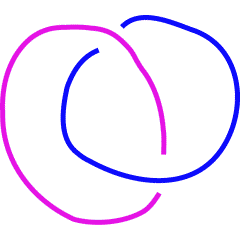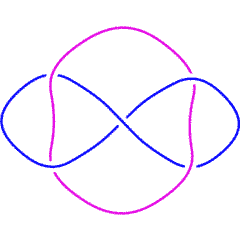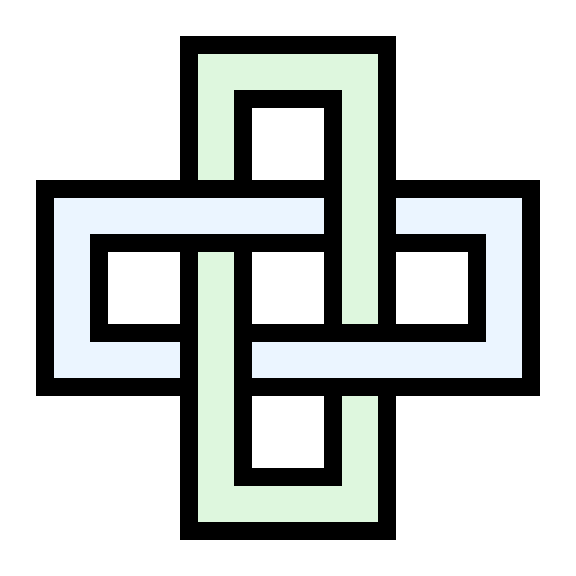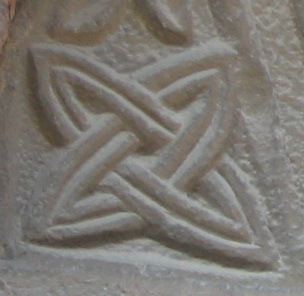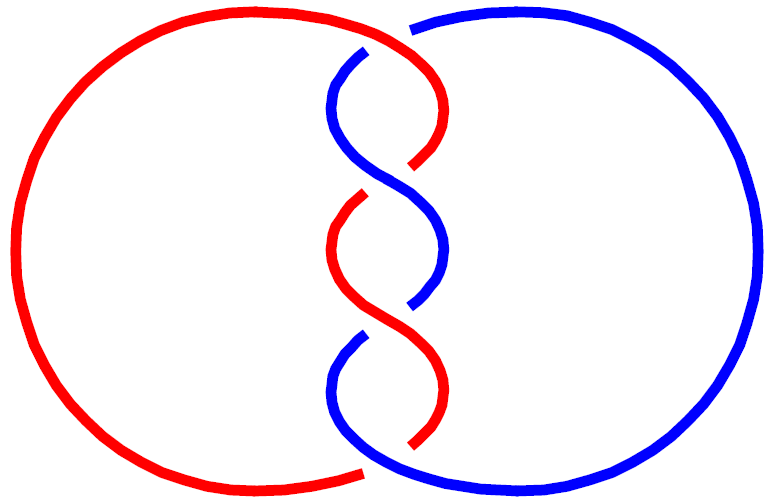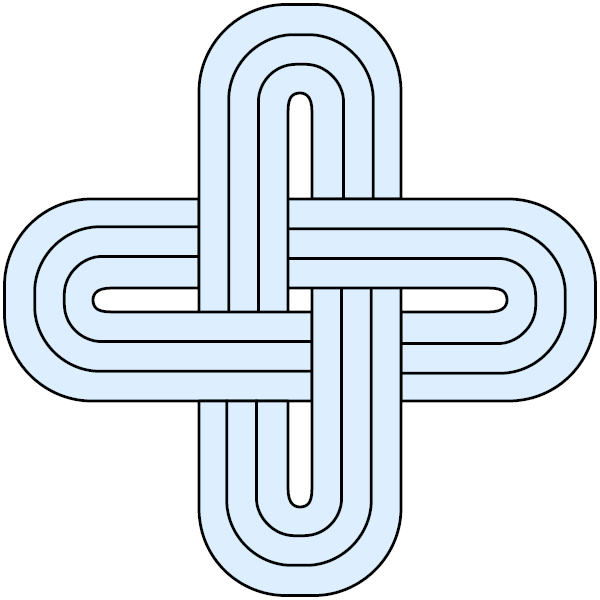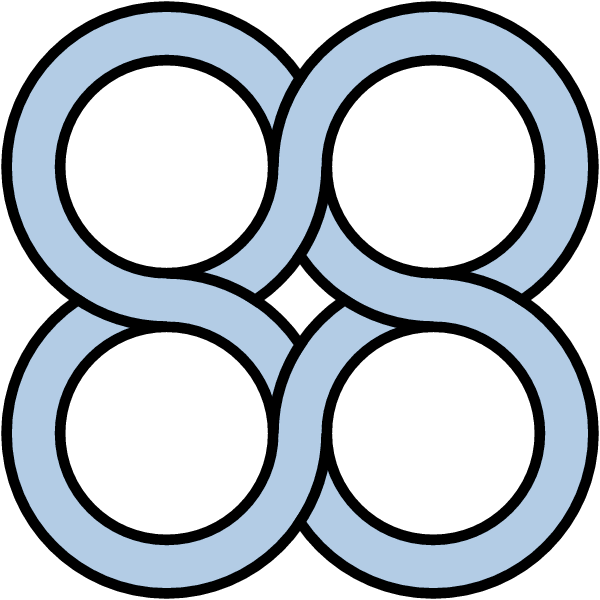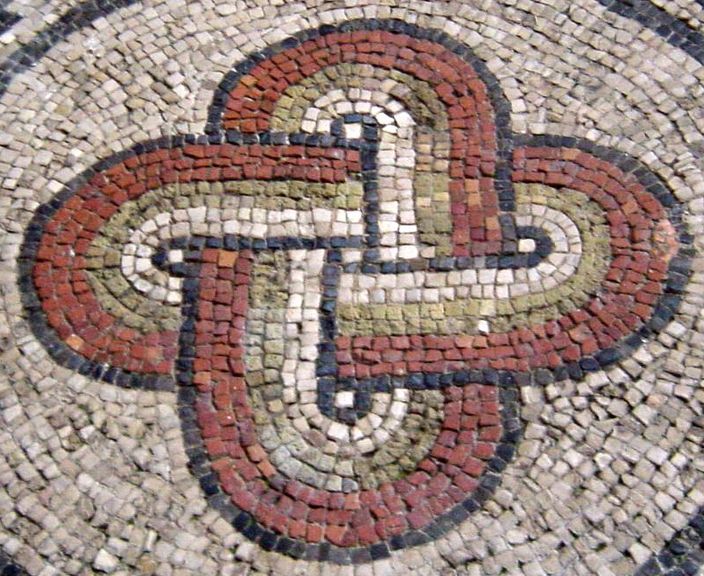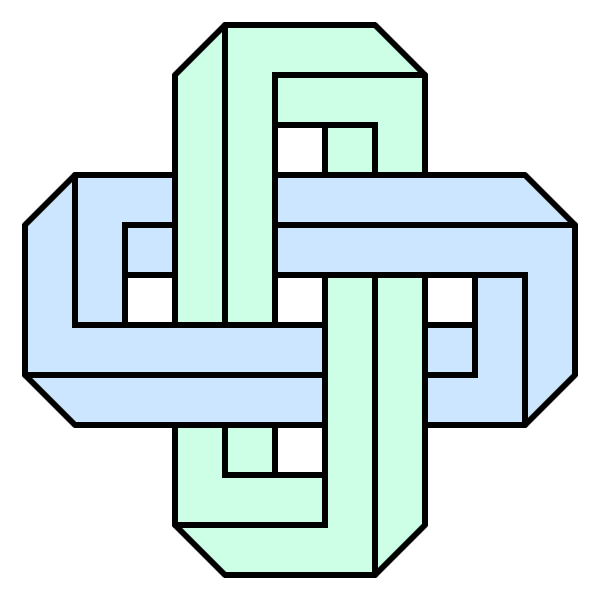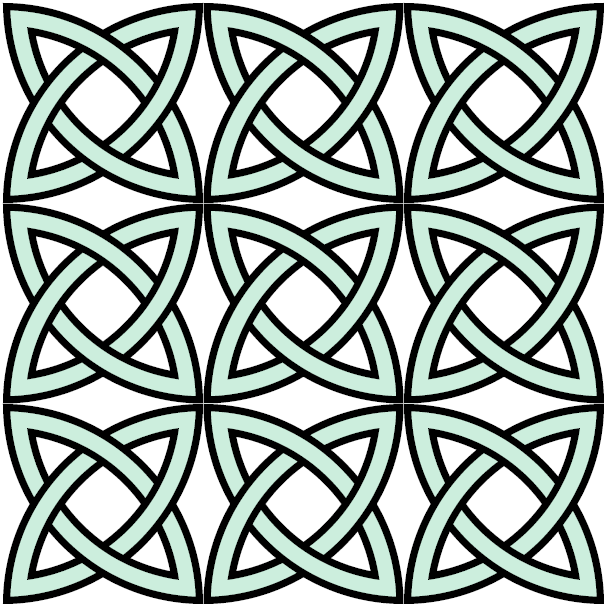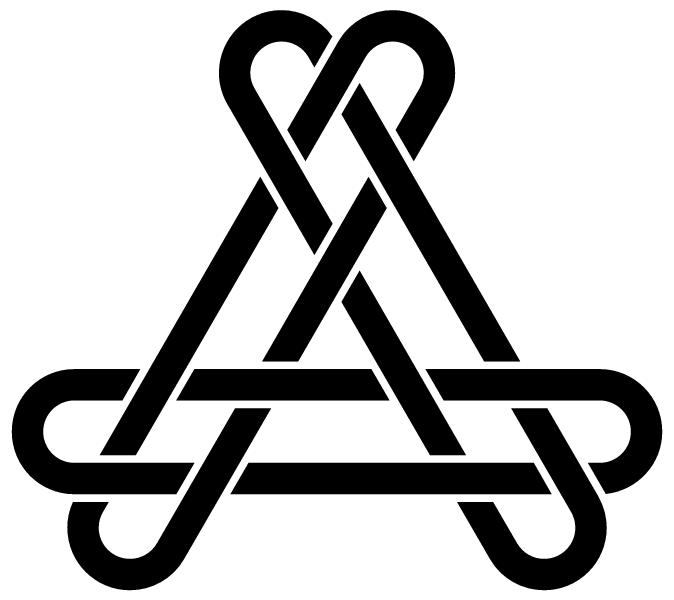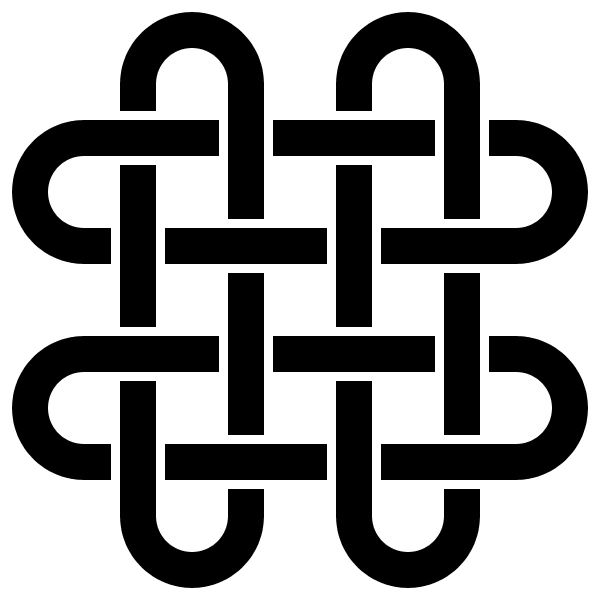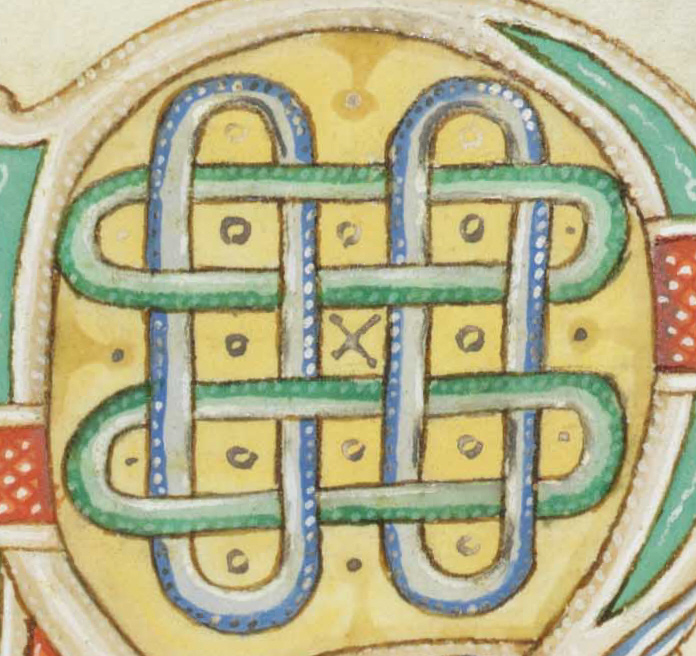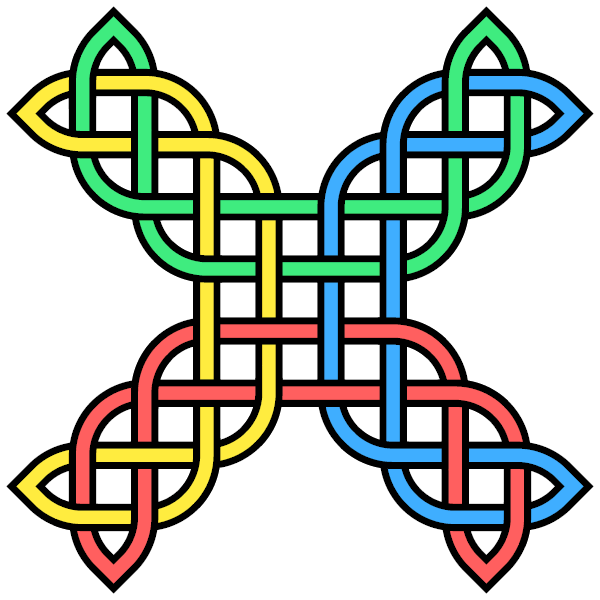L4a1
From Knot Atlas
Jump to navigationJump to search
|
|
|
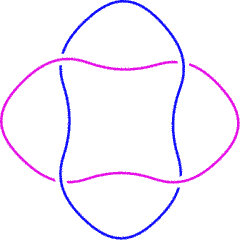
|
Visit L4a1's page at Knotilus!
Visit L4a1's page at the original Knot Atlas! |
| L4a1 is in the Rolfsen table of links. It frequently occurs in late Roman mosaics and some medieval decorations. In this context, it is called the "Solomon's knot" (sigillum Salomonis) or "guilloche knot". It is also the "Kramo-bone" symbol (meaning "one being bad makes all appear to be bad") of the Adinkra symbol system. Link L10a101 contains multiple L4a1 configurations. |
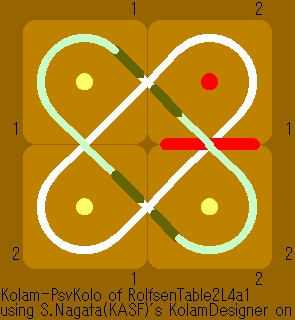 A Kolam with two cycles[1] |
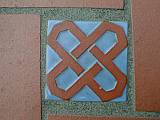 Hearst Castle tile [2] |
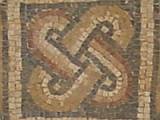 Mosaic seen at Kibbutz Lahav [3] | ||||
Knot presentations
| Planar diagram presentation | X6172 X8354 X2536 X4718 |
| Gauss code | {1, -3, 2, -4}, {3, -1, 4, -2} |
Polynomial invariants
| Multivariable Alexander Polynomial (in , , , ...) | (db) |
| Jones polynomial | (db) |
| Signature | -1 (db) |
| HOMFLY-PT polynomial | (db) |
| Kauffman polynomial | (db) |
Vassiliev invariants
| V2 and V3: | (0, ) |
| V2,1 through V6,9: |
|
V2,1 through V6,9 were provided by Petr Dunin-Barkowski <barkovs@itep.ru>, Andrey Smirnov <asmirnov@itep.ru>, and Alexei Sleptsov <sleptsov@itep.ru> and uploaded on October 2010 by User:Drorbn. Note that they are normalized differently than V2 and V3.
Khovanov Homology
| The coefficients of the monomials are shown, along with their alternating sums (fixed , alternation over ). The squares with yellow highlighting are those on the "critical diagonals", where or , where -1 is the signature of L4a1. Nonzero entries off the critical diagonals (if any exist) are highlighted in red. |
|
| Integral Khovanov Homology
(db, data source) |
|
Computer Talk
Much of the above data can be recomputed by Mathematica using the package KnotTheory`. See A Sample KnotTheory` Session.
In[1]:= |
<< KnotTheory` |
Loading KnotTheory` (version of August 17, 2005, 14:44:34)... | |
In[2]:= | Crossings[Link[4, Alternating, 1]] |
Out[2]= | 4 |
In[3]:= | PD[Link[4, Alternating, 1]] |
Out[3]= | PD[X[6, 1, 7, 2], X[8, 3, 5, 4], X[2, 5, 3, 6], X[4, 7, 1, 8]] |
In[4]:= | GaussCode[Link[4, Alternating, 1]] |
Out[4]= | GaussCode[{1, -3, 2, -4}, {3, -1, 4, -2}] |
In[5]:= | BR[Link[4, Alternating, 1]] |
Out[5]= | BR[Link[4, Alternating, 1]] |
In[6]:= | alex = Alexander[Link[4, Alternating, 1]][t] |
Out[6]= | ComplexInfinity |
In[7]:= | Conway[Link[4, Alternating, 1]][z] |
Out[7]= | ComplexInfinity |
In[8]:= | Select[AllKnots[], (alex === Alexander[#][t])&] |
Out[8]= | {} |
In[9]:= | {KnotDet[Link[4, Alternating, 1]], KnotSignature[Link[4, Alternating, 1]]} |
Out[9]= | {Infinity, -1} |
In[10]:= | J=Jones[Link[4, Alternating, 1]][q] |
Out[10]= | -(9/2) -(5/2) -(3/2) 1 |
In[11]:= | Select[AllKnots[], (J === Jones[#][q] || (J /. q-> 1/q) === Jones[#][q])&] |
Out[11]= | {} |
In[12]:= | A2Invariant[Link[4, Alternating, 1]][q] |
Out[12]= | -16 2 2 2 -8 |
In[13]:= | Kauffman[Link[4, Alternating, 1]][a, z] |
Out[13]= | 3 54 a a 3 5 2 2 4 2 3 3 5 3 |
In[14]:= | {Vassiliev[2][Link[4, Alternating, 1]], Vassiliev[3][Link[4, Alternating, 1]]} |
Out[14]= | 65 |
In[15]:= | Kh[Link[4, Alternating, 1]][q, t] |
Out[15]= | -2 1 1 1 1 |
